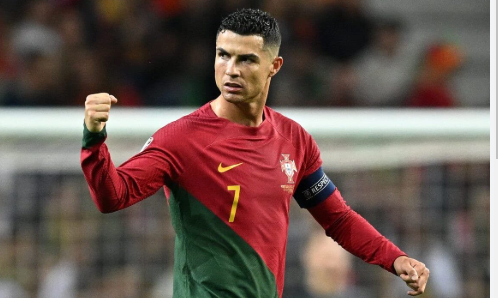
Cristiano Ronaldo Tops 2024’s Highest-Paid Athletes; No Women Included
In 2024, the sports industry witnessed a significant financial milestone as Portuguese footballer Cristiano Ronaldo was named the highest-paid athlete, earning an unprecedented $260 million. This achievement underscores the immense earning potential in professional sports, particularly within men’s football. However, a glaring disparity accompanied this milestone: not a single female athlete appeared in the top 100 earners, highlighting the persistent gender pay gap in sports.
Cristiano Ronaldo’s Record-Breaking Earnings
Cristiano Ronaldo’s financial success in 2024 is attributed to both his on-field performance and lucrative off-field endorsements. His contract with Saudi Arabian club Al-Nassr contributed significantly to his earnings, with $200 million derived from salary and winnings. Additionally, Ronaldo’s extensive endorsement portfolio, including partnerships with major brands like Nike and Herbalife, added $60 million to his income. This combination of salary and endorsements not only solidified his position at the top but also set a new benchmark for athlete earnings.
The Top Earners: A Closer Look
The 2024 list of highest-paid athletes showcases a diverse range of sports, yet remains predominantly male. Following Ronaldo, Spanish golfer Jon Rahm secured the second spot with $218 million, largely due to his participation in the Saudi-funded LIV Golf league. Argentine footballer Lionel Messi earned $135 million, placing him third, with significant contributions from both his salary and endorsements. Other notable athletes in the top ten include:
- LeBron James: The American basketball icon earned $128.2 million, with a substantial portion from endorsements.
- Giannis Antetokounmpo: The Greek basketball star amassed $111 million, reflecting his dominance in the NBA.
- Kylian Mbappé: The French football sensation earned $110 million, showcasing his rising prominence in the sport.
- Neymar: The Brazilian footballer garnered $108 million, maintaining his status as one of the sport’s top earners.
- Karim Benzema: The French striker earned $106 million, reflecting his continued excellence on the field.
- Stephen Curry: The American basketball sharpshooter earned $102 million, bolstered by endorsements and a lucrative contract.
- Lamar Jackson: The American football quarterback rounded out the top ten with $100.5 million in earnings.
Absence of Female Athletes: A Stark Reality
The conspicuous absence of female athletes from the top 100 earners in 2024 highlights the enduring gender pay gap in professional sports. Historically, athletes like Naomi Osaka and Serena Williams have featured prominently on such lists, with Osaka earning $57.3 million in 2022 and Williams $41.8 million in 2021. However, in 2024, no female athlete reached the earnings threshold to make the list. American tennis player Coco Gauff came closest, earning $30.4 million, which fell short of the cutoff.
This disparity raises critical questions about the structural inequalities in sports, including disparities in prize money, sponsorship opportunities, and media coverage between male and female athletes. The financial success of male athletes, particularly in sports like football and basketball, is often amplified by substantial media rights deals and global sponsorships, advantages less accessible to female athletes.
The Role of Endorsements and Media Coverage
Endorsements play a pivotal role in an athlete’s total earnings, often bridging the gap between salary and overall income. Male athletes frequently secure high-value endorsement deals due to their visibility and the commercial appeal of the sports they represent. In contrast, female athletes often face challenges in attracting similar sponsorships, partly due to less media exposure and investment in women’s sports.
The media’s role in perpetuating this disparity cannot be overlooked. Extensive coverage of men’s sports enhances the marketability of male athletes, leading to more lucrative endorsement deals. To address this imbalance, there is a pressing need for increased investment in and coverage of women’s sports, which could, in turn, enhance the earning potential of female athletes.
Moving Towards Equity in Sports Earnings
Addressing the gender pay gap in sports requires a multifaceted approach involving stakeholders at all levels. Sports organizations, sponsors, and media outlets must collaborate to elevate women’s sports through increased investment, equitable pay structures, and enhanced media representation. By creating an environment that values and promotes female athletes, the sports industry can take significant strides toward closing the earnings gap and fostering a more inclusive landscape for all athletes.
Leave a Reply